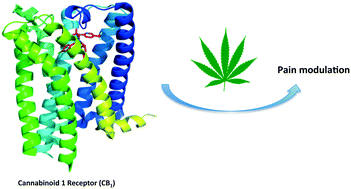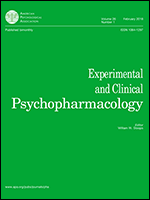 “Omega-3 fatty acid derived endocannabinoids are metabolized by cytochrome P450s to form bioactive endocannabinoid epoxides that are anti-inflammatory.
“Omega-3 fatty acid derived endocannabinoids are metabolized by cytochrome P450s to form bioactive endocannabinoid epoxides that are anti-inflammatory.
RESULTS:
Cannabinoids are found in marijuana and also are produced naturally in the body from ω-3 and ω-6 fatty acids. Exocannabinoids in marijuana, are known to be responsible for some of its euphoric effects, but they also exhibit anti-inflammatory benefits. Our study revealed a cascade of enzymatic reactions that convert ω-3 fatty acids into anti-inflammatory endocannabinoid epoxides that act through the same receptors in the body as marijuana (PNAS 2017).
Endocannabinoids are ligands for cannabinoidreceptor 1 and 2 (CB1 and CB2). CB1 receptor agonists exhibit psychotropic properties while CB2 receptor agonists have anti-inflammatory effects. Consequently, there is a strong interest in the discovery of CB2 selective agonists to mitigate inflammatory pathologies. The work details the discovery and characterization of naturally occurring ω-3-derived endocannabinoid epoxides that are formed via enzymatic oxidation of ω-3 endocannabinoids by cytochrome P450 epoxygenases. These dual functional ω-3 endocannabinoid epoxides exhibit preference towards binding to CB2 receptor and are anti-inflammatory and vasodilatory and reciprocally modulate platelet aggregation. Some of the other regioisomers of ω-3 endocannabinoid epoxides are partial agonists of CB1 and stop tumor cell metastasis (J. Med. Chem 2018). By virtue of their physiological properties, they are expected to play important roles in neuroinflammation and pain.
CONCLUSIONS:
This finding demonstrates how omega-3 fatty acids can produce some of the same medicinal qualities as marijuana, but without a psychotropic effect. In summary, the ω-3 endocannabinoid epoxides are found at concentrations comparable to those of other endocannabinoids and are expected to play critical roles during inflammation in vivo.”
https://www.ncbi.nlm.nih.gov/pubmed/31223777
https://academic.oup.com/cdn/article/3/Supplement_1/nzz031.FS15-01-19/5518049


 “Much of the opioid epidemic arose from abuse of prescription opioid drugs.
“Much of the opioid epidemic arose from abuse of prescription opioid drugs.


 “Chronic pain may be treated by medical cannabis. Yet, there is scarce evidence to support the role of medical cannabis in the treatment of fibromyalgia. The aim of the study was to investigate the characteristics, safety, and effectiveness of medical cannabis therapy for fibromyalgia.
“Chronic pain may be treated by medical cannabis. Yet, there is scarce evidence to support the role of medical cannabis in the treatment of fibromyalgia. The aim of the study was to investigate the characteristics, safety, and effectiveness of medical cannabis therapy for fibromyalgia.


